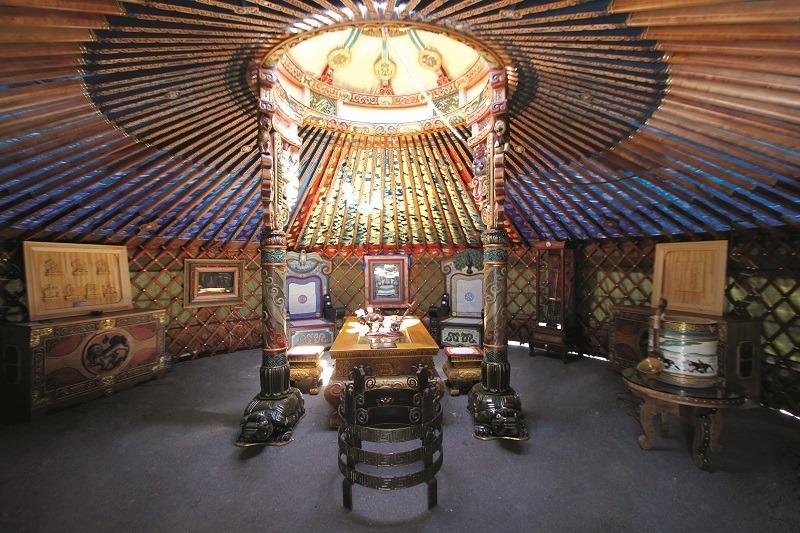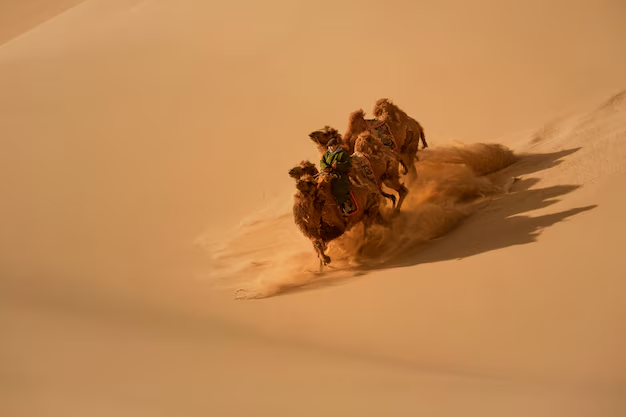
The Mongolia Ger: A Sustainble Way of Life
The Mongolian ger has been the traditional dwelling of the Mongolian people for centuries, uniquely adapted to their nomadic lifestyle and the harsh natural environment. It is an eco-friendly, portable, and durable structure designed to provide comfort in extreme weather conditions.
The fundamental structure of the Mongolian ger consists of several key components: the uni (roof poles), khana (wooden lattice walls), toono (circular crown that allows light and ventilation), bagana (central supporting columns), felt covering (for insulation), and the wooden door (entrance). These elements, when assembled correctly, ensure the stability and durability of the ger.
The traditional process of setting up a ger follows specific customs passed down through generations. First, an appropriate site is chosen with consideration for terrain and wind conditions. Then, the base is laid, the walls are connected, the columns are erected, and the roof poles are installed. Finally, the felt covering is placed and secured with ropes.

Dismantling the ger requires a structured approach, starting with removing the interior furnishings, followed by taking down the felt layers, and then carefully disassembling the roof poles, crown, and support columns. The lattice walls are folded and packed efficiently for transportation.
Nomadic migration, or khot ail, is a well-organized process. It involves planning the migration route based on pasture availability and water sources, packing household belongings onto camels or ox carts, and transporting the ger components securely. Upon arrival at a new location, the ger is reassembled, and daily life resumes.
The design of the Mongolian ger symbolizes the harmony between humans and nature. The toono represents a connection to the sky, the door signifies the entrance to life, and the walls symbolize unity and communal living.
The traditions of setting up, dismantling, and migrating with the Mongolian ger reflect the deep-rooted cultural heritage and the sustainable living practices of the Mongolian people.
A Journey through the Gobi: Camel I Riding Mongolia
Title: A Journey through the Gobi: Camel Riding in Mongolia
Nestled between vast stretches of desert and rugged mountains, Mongolia’s Gobi Desert beckons adventurers from around the globe. Among the myriad of experiences it offers, camel riding stands out as a timeless tradition, a way to traverse the ancient landscape much as nomads have done for centuries.
The allure of camel riding in the Gobi lies not only in the novelty of the experience but also in the deep connection it fosters with the land and its people. As tourists embark on their journey atop these majestic creatures, they are enveloped in a sense of timelessness, transported to an era where the vast expanse of the desert was both a formidable challenge and a boundless adventure. The Gobi’s rugged terrain, characterized by rolling sand dunes, rocky outcrops, and endless plains, provides the perfect backdrop for camel treks. As the gentle sway of the camel carries riders across the desert, every step unveils a new vista, a new chapter in the ancient tale of this land.
For many tourists, camel riding in the Gobi is not just about exploration; it’s about immersion in a way of life deeply rooted in the traditions of Mongolia’s nomadic herders. As they traverse the desert, they encounter nomadic families who graciously welcome them into their gers, offering a glimpse into their customs, cuisine, and daily rituals. Sharing stories around the campfire under the vast canopy of stars, tourists forge connections that transcend language barriers, finding common ground in the shared experience of the desert.
Beyond the cultural exchange, camel riding in the Gobi offers a unique perspective on conservation and sustainability. As tourists witness firsthand the delicate balance between human activity and the fragile desert ecosystem, they gain a newfound appreciation for the importance of responsible tourism in preserving this pristine wilderness for future generations.
In the end, a journey through the Gobi on camelback is more than just a tourist activity; it’s a transformative experience that leaves an indelible mark on the soul. It’s a reminder of the inherent beauty of the natural world and the enduring spirit of adventure that resides within us all. So, as the sun sets over the vast expanse of the Gobi, casting a golden hue over the endless sands, tourists depart with hearts full of memories and a longing to return to this enchanted land.
